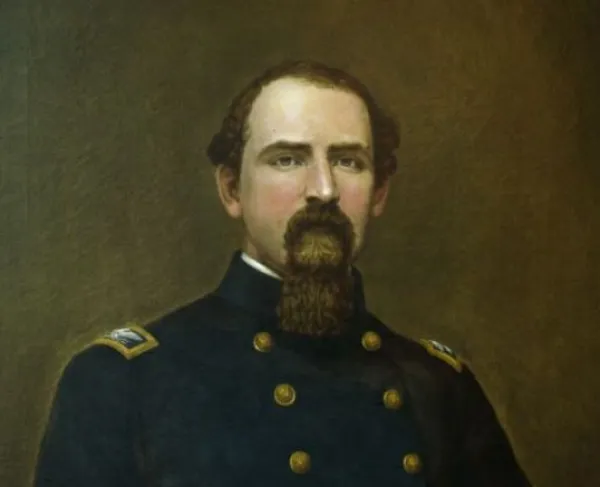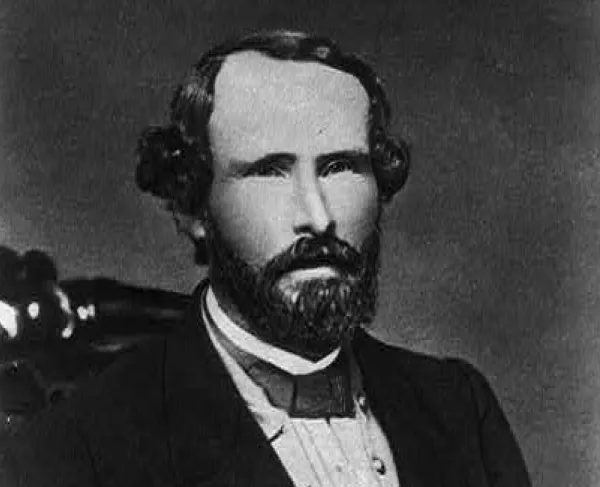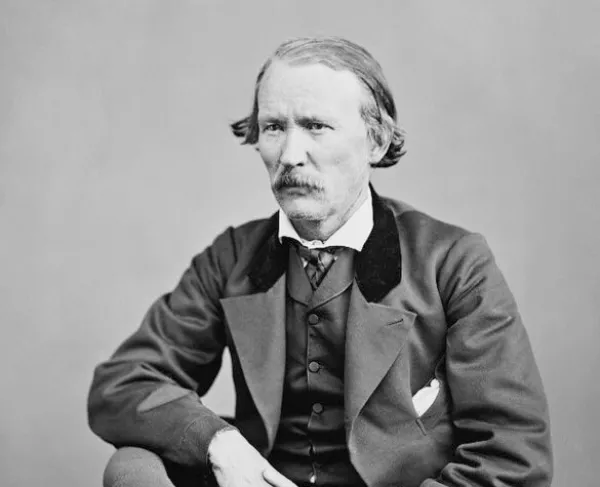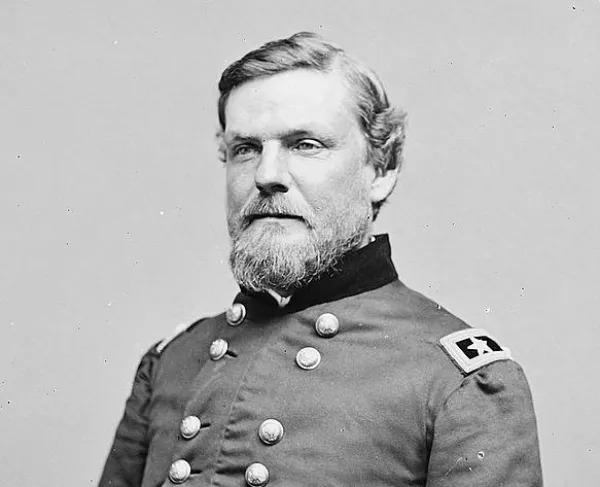John Wayles Jefferson

John Wayles Jefferson was the grandson of Thomas Jefferson, the man who penned “all men are created equal” and his slave Sally Hemings. However, he never publicly acknowledged these connections. If he did, then his status as an interracial Black man could come to light and jeopardize his positions in a society where your skin color meant that not all men were created equal.
John was born as John Wayles Hemings in Charlottesville, VA, on May 8, 1835, to Eston Hemings and Julie Ann Issacs. Eston was the last of five children to be born between Thomas Jefferson and Sally Hemings. Because of the legal doctrine partus sequitur ventrum, the status of the mother determined if her children were to be enslaved or free. Since Sally Hemings was a slave, Eston and his five siblings were born into slavery. However, because of their light-skin tone and their parentage, they were allowed to do “light” work in the house and learn skilled trades. His older siblings, Beverly and Harriet, were allowed to “escape” Monticello and start new lives up North before Jefferson’s death. Both were given one-way tickets out of Virginia with the understanding that they could not return to Virginia unless they wanted to return to slavery. Eston and his brother Madison were emancipated through Jefferson’s will after he died in 1826. With Jefferson’s intervention before his death, both were allowed to remain in Virginia even though the law stated that all free-Blacks were to leave the state within twelve months of emancipation.
After their emancipation, Madison and Eston built a home in Charlottesville, VA. Although not freed in Jefferson’s will, Jefferson’s daughter Martha “Patsy” Jefferson emancipated Sally Hemings. She remained with Madison and Eston until she died in 1835. In the 1830 census, all three were recorded as “free whites.” In 1832, Eston married a free woman of color Julia Ann Issacs. She was the daughter of a wealthy Jewish merchant David Isaacs and a free woman of color Anne West who ran a local bakery. John was their first child. He was named after his great-grandfather John Wayles who was a wealthy Southern plantation owner and the father of both Sally Hemings and Martha Wayles Jefferson, Jefferson’s wife.
In 1837, Eston moved his family to Chillicothe, Ohio, with the desire to find acceptance for his family’s mixed-race status in the North. In Ohio, John and his two siblings were educated in integrated schools and lived in a free Black community. This community participated in abolitionist activities in the area and aided fugitive slaves along the Underground Railroad.
However, when the Fugitive Slave Act passed in 1852, Ohio became a dangerous place for free Blacks. This Act gave authorization for slave catchers to pursue fugitive slaves into Northern territories and return them to their previous slave owners for monetary rewards. To increase profits, slave catchers routinely kidnapped free Blacks and sold them into slavery under the guise that they were “fugitive slaves.” Hoping to protect his family, Eston moved further north to Madison, Wisconsin. Once there, the family changed their surname from “Hemings” to “Jefferson” and integrated into “white” society hoping to hide their Black roots and protect themselves from slave catchers.
In Wisconsin, John made a name for himself by operating the American House Hotel in downtown Madison with his brother William. Even though the pair was financially successful when the Civil War broke out, both brothers joined the Union Army as “white” soldiers. On August 26, 1861, John mustered into the 8th Wisconsin Infantry Regiment, and a month later was promoted to Major. He was wounded during the Siege of Corinth but continued to serve. A month before the Siege of Vicksburg, John was promoted to Lieutenant Colonel. While injured in the siege, John continued to fight and was promoted to Colonel for his efforts. He mustered out of the army on October 11, 1864.
Throughout the war, John was a newspaper correspondent. While marching from battlefield to battlefield, John wrote observation of the towns the army passed, the people he met, and his feelings during the long days of fighting. His writing career continued after the war, and his move to Memphis, Tennessee to become a cotton broker. In Tennessee, he founded the Continental Cotton Company and lived in wealth until he died in 1892 as a “white” man.
While he went by the last name “Jefferson” since his family moved to Wisconsin, John hid the fact that his grandfather was Thomas Jefferson, and his grandmother was Sally Hemings. In a retrospective article about Eston’s life in 1902, published by the local Chillicothe paper The Scioto Gazette, the author reminiscent about his interactions with John. “At any rate,” the author noted:
the children had scarcely a visible a mixture of colored blood; and I saw and talked with one of the sons, during the Civil War, who was then wearing the silver leaves of a lieutenant colonel, and in command of a fine regiment of white men from a north-western state. He begged me not to tell the fact that he had colored blood in his veins, which he said was not suspected by any of his command; and of course, I did not.
If the information of his lineage was revealed, John could have lost his command in the Union Army, lost his potential for future business dealings, and lost his place in society. It was safer to hide his identity and squash any speculation that he could be mixed-race. During his lifetime, there were speculations about a potential union between Jefferson and Hemings. Still, nothing was confirmed, and many believed that Sally Hemings had been in a relationship with Peter Carr, Jefferson’s nephew, instead of Jefferson himself. While Madison Hemings began telling reporters about Sally and Jefferson’s relationship in 1873, John remained silent. It was not until the twentieth century and several DNA tests until it was proven that Jefferson had children with Hemings and that John Wayles Jefferson was Thomas Jefferson’s grandson.





